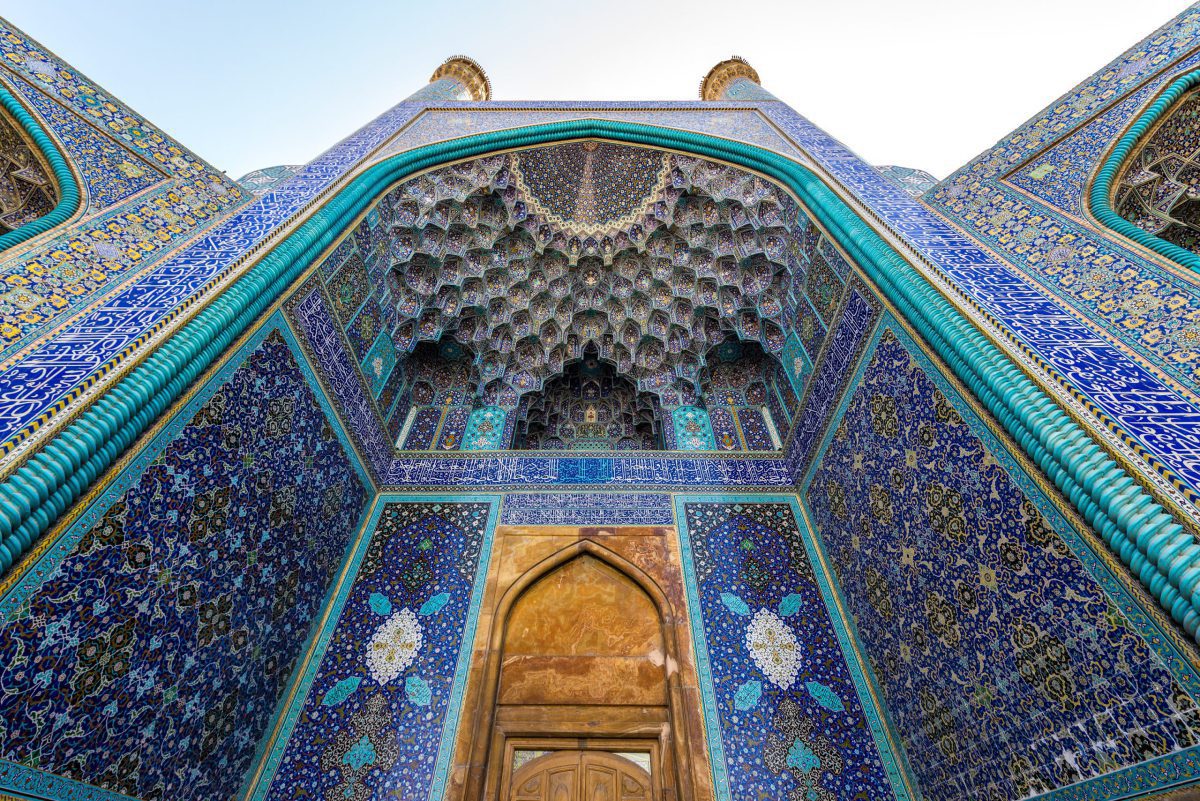Table of Contents
Welcome to Isfahan, Iran, where the radiant Naqsh Jahan Square stands adorned with architectural wonders. Among these magnificent structures is the awe-inspiring Shah Mosque, also known as Imam Mosque, Jame Abbasi Mosque, or Sultani Mosque. This Safavid-era masterpiece encapsulates the grandeur and artistic brilliance of its time. In this blog post, we embark on a journey to explore the rich history, captivating architecture, and remarkable features of the Shah Mosque, which continues to be a symbol of cultural and historical significance in Isfahan.
Historical Background of Shah Mosque
Construction Timeline
Imagine the year 1020 AH when the illustrious Shah Abbas I of the Safavid dynasty issued an order to commence the construction of the Shah Mosque. Over the course of several years, skilled artisans and craftsmen dedicated their talents to bring this architectural marvel to life. Finally, in 1025 AH, the completion of the exquisite marble tiling marked a significant milestone in the mosque’s construction, showcasing the meticulous craftsmanship of the era.
Importance of Shah Mosque during the Safavid Period
Shah Mosque played a pivotal role during the Safavid era, not only as a place of worship but also as a symbol of the dynasty’s opulence and religious devotion. Designed to beautify the sprawling Naqshe Jahan Square, this grand mosque commanded attention and reverence. Its significance is underscored by mentions in historical books such as “Alam Arai Abbasi,” which celebrate the mosque’s splendor and architectural ingenuity.
Inscriptions and Dedications in Shah Mosque
As you wander through the halls of Shah Mosque, take a moment to marvel at the inscriptions that adorn its walls. One such inscription, authored by Alireza Abbasi in 1025 AH, reveals that Shah Abbas I personally financed the mosque’s construction and dedicated its rewards to the soul of his esteemed ancestor, Shah Tahmasb. These inscriptions not only serve as historical records but also highlight the piety and generosity of the Safavid rulers.
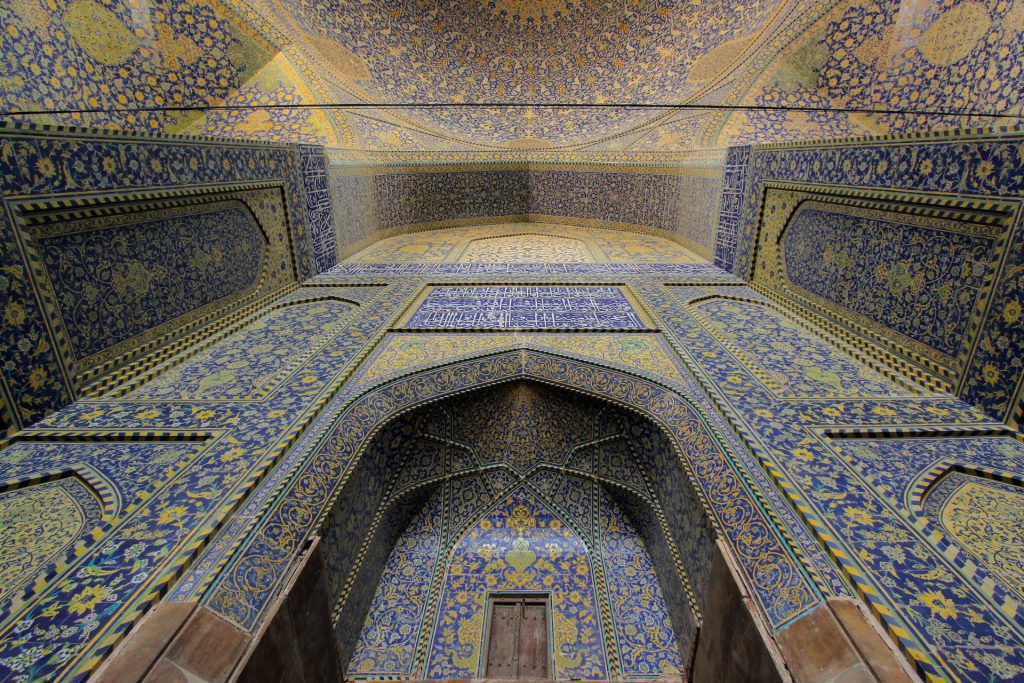
Architecture and Design of Shah Mosque
Layout and Features
Let us delve into the architectural magnificence of the Shah Mosque. As you approach the mosque, its strategic orientation and position on the southern side of Naqsh Jahan Square command attention. Step inside to discover the four majestic porches and the harmonious proportions of the mezzanine, showcasing the architectural brilliance of the Safavid era. Furthermore, the presence of Naseri and Soleimanieh Madrassas within the mosque complex adds to its allure, reflecting the integration of educational spaces within religious structures.
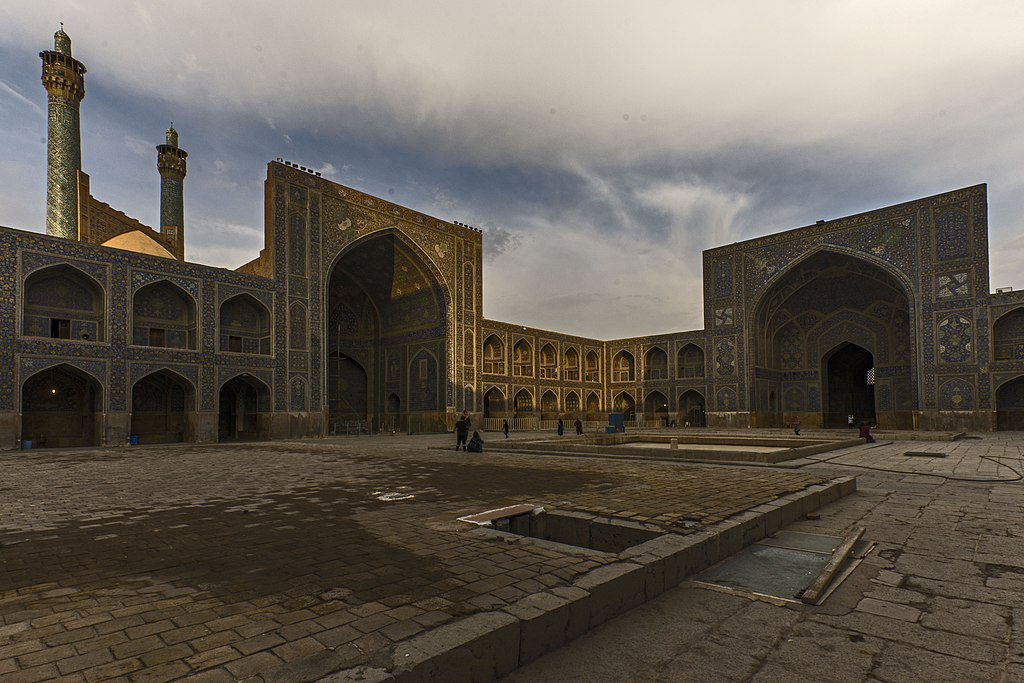
Dome and Minarets of Shah Mosque
Direct your gaze upwards to appreciate the breathtaking dome and minarets of the Shah Mosque. The dome, constructed with two separate ahian shells, known as the Saboui dome, stands as a testament to architectural ingenuity. Its height and symbolism make it a dominant feature of the mosque, exuding an aura of spirituality and transcendence. The minarets, with their intricate Islamic motifs, rise proudly alongside the dome, inviting worshippers and visitors alike to experience the divine ambiance.
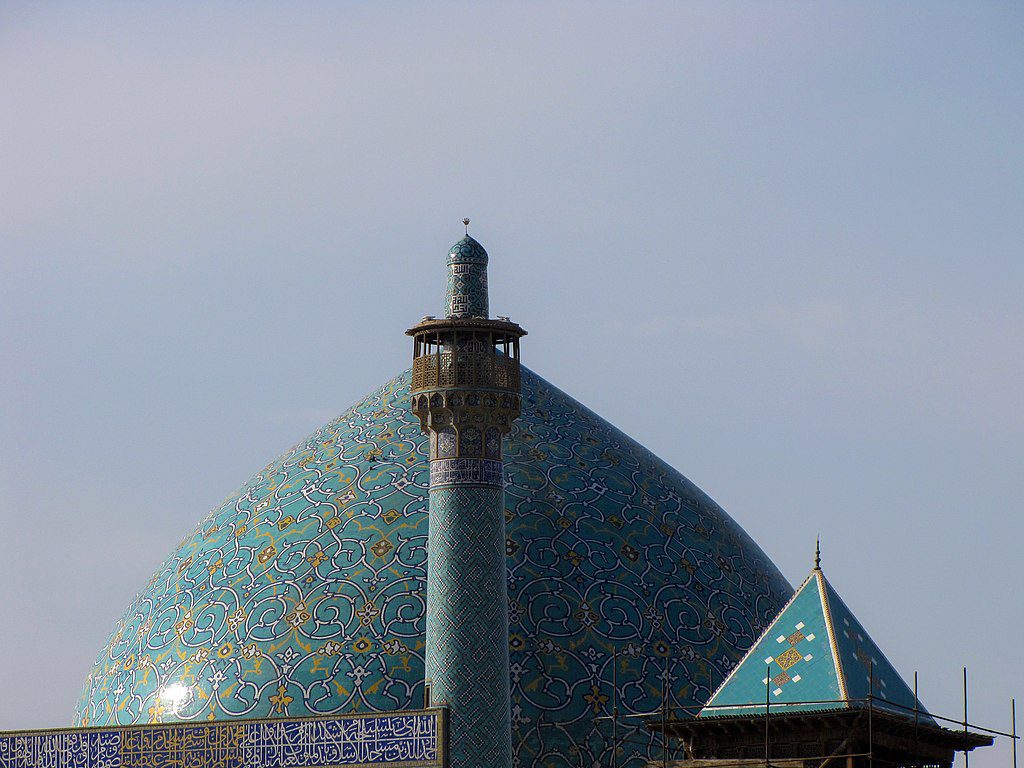
Tiling and Decorations
Prepare to be mesmerized by the dazzling display of mosaic tiles and intricate decorations within Shah Mosque. As you enter through the ornate gate, an explosion of colors and patterns greets your eyes. The mosaic tiles, meticulously arranged in vibrant hues, depict symbolic motifs such as peacocks, sparrows, and delicate flower branches, evoking images of paradise. These artistic representations, complemented by calligraphy in Kufic script showcasing the sacred names of “Allah,” “Muhammad,” and “Ali,” reflect the devotion and reverence of the Safavid period.
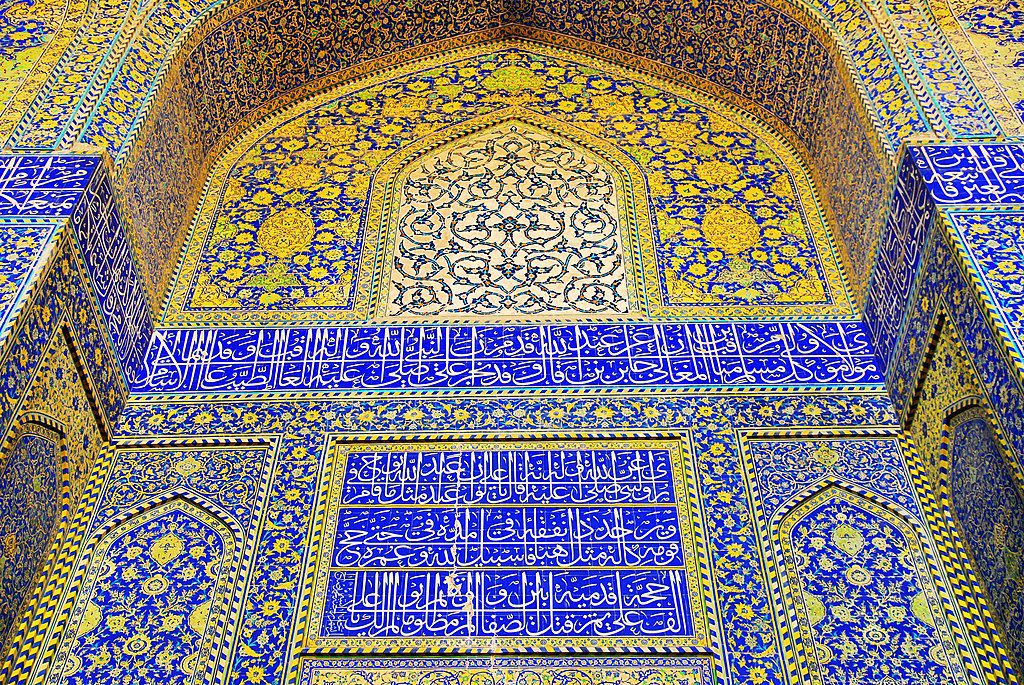
Notable Features of Shah Mosque
Sound Reflection:
One of the unique aspects of Shah Mosque is the phenomenon of sound reflection within its large south dome. Stand beneath the dome and experience the ethereal echoes that envelop the space, creating a spiritual ambiance that transcends the mundane.
Marble and Sandstone
The skilled craftsmen of the Safavid era employed solid marble stones and exquisite sandstones to construct Shah Mosque, infusing it with an unparalleled elegance. As you explore the mosque, marvel at the intricate details and fine craftsmanship of these precious materials, which have withstood the test of time, adding to the enduring allure of the structure.
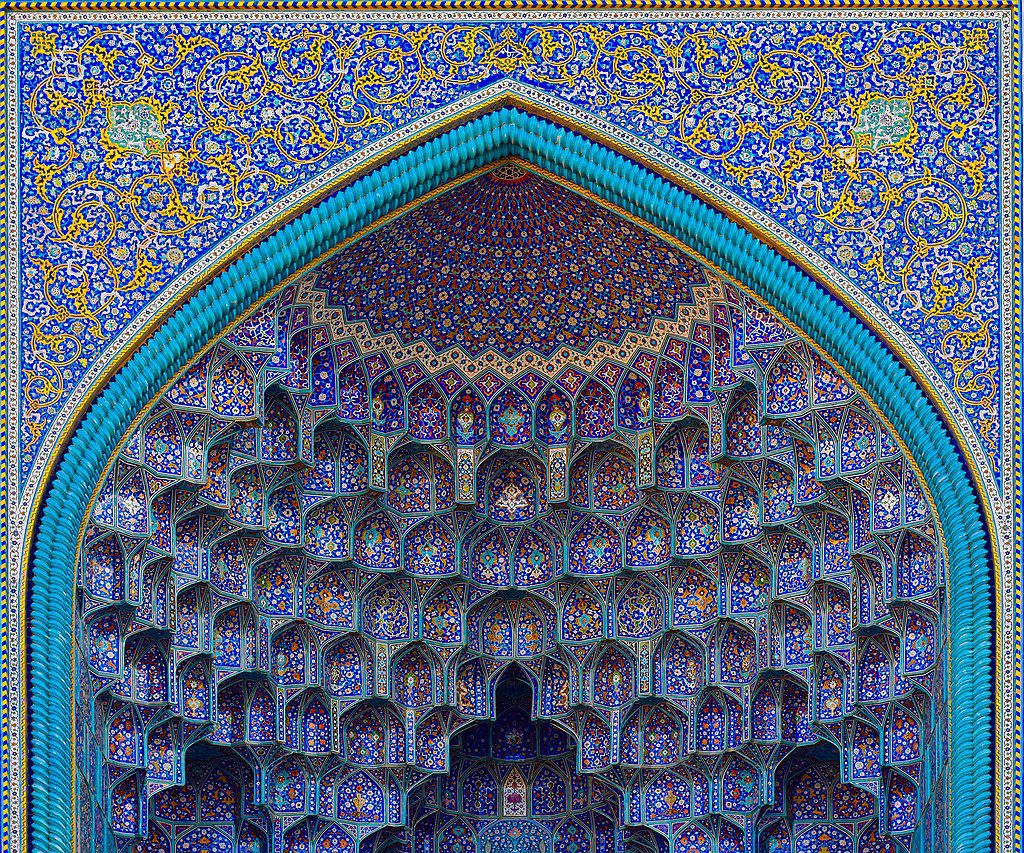
Stone Tablets
Immerse yourself in the historical context of Shah Mosque as you encounter the stone tablets bearing decrees from Shah Abbas I. These inscriptions connect the mosque to its illustrious past and remind us of the significance of this architectural gem in the history of Isfahan.
Pulpit and Altar Cabinet
At the heart of Shah Mosque lies a magnificent sumac stone pulpit, consisting of fourteen steps and serving as a focal point for religious sermons. The pulpit’s design and craftsmanship exemplify the attention to detail prevalent during the Safavid era. Furthermore, above the altar, a captivating Dolabcheh cabinet, adorned with gold embellishments and blades, adds an air of grandeur and mystique.
Visiting Hours and Tickets of Shah Mosque
Availability and Restrictions
To plan your visit, note that Shah Mosque is open every day except the days of mourning, and Itikaf. These restrictions allow for the uninterrupted observance of prayers and religious rituals within the mosque.
Ticket Prices
For domestic tourists, the ticket price for experiencing the splendor of Shah Mosque is five thousand tomans, while foreign tourists can enter for fifty thousand tomans. These nominal fees contribute to the preservation and maintenance of this architectural gem, ensuring its magnificence endures for future generations.

FAQ about Shah Mosque in Isfahan
Q: What are the alternative names of Shah Mosque in Isfahan?
A: Shah Mosque is also known by other names, including Imam Mosque, Jame Abbasi Mosque, and Sultani Mosque.
Q: Where is Shah Mosque located?
A: Shah Mosque is situated in Naqsh Jahan Square in Isfahan, Iran. It is within the boundaries of the Safavid Government House.
Q: What is the historical significance of Shah Mosque?
A: Shah Mosque holds immense historical significance as it is considered a Safavid-era architectural masterpiece. It played a vital role in beautifying Naqsh Jahan Square and served as a symbol of the opulence and religious devotion of the Safavid dynasty.
Q: When was Shah Mosque constructed?
A: The construction of Shah Mosque began in 1020 AH under the order of Shah Abbas I, one of the prominent rulers of the Safavid dynasty. It is an architectural gem from the 11th century.
Q: What are some notable features of Shah Mosque?
A: Shah Mosque boasts stunning architectural features, including a grand dome, minarets, intricate tiling, and captivating decorations. It also houses the sumac stone pulpit and stone tablets with historical inscriptions.
Q: Can visitors explore the interior of the Shah Mosque?
A: Yes, visitors can explore the interior of the Shah Mosque, experiencing its magnificent architecture and artistic details. However, it is important to be mindful of the mosque’s opening hours and any restrictions on certain days, such as Fridays and days of mourning.
Q: Are there any guided tours available for Shah Mosque?
A: Yes, guided tours are available for visitors who wish to gain deeper insights into the history and significance of Shah Mosque. Professional tour operators, such as ToIranTour, offer customised tours that cater to individual preferences and provide expert guidance throughout the visit.
Q: How can one reach the Shah Mosque in Isfahan?
A: Shah Mosque is conveniently located in Naqsh Jahan Square, making it easily accessible. Visitors can use public transport or private cars to reach the square, and the nearest metro and bus stations are Imam Hossein Square station. There are also public parking lots available for those traveling by car.
Q: Are there any entrance fees for visiting Shah Mosque?
A: Yes, there are entrance fees for visiting Shah Mosque. The ticket prices vary for domestic tourists and foreign tourists, typically ranging from five thousand tomans for domestic visitors to fifty thousand tomans for foreign visitors. These fees contribute to the preservation and maintenance of the mosque.
Q: What is the best time to visit Shah Mosque?
A: Shah Mosque can be visited throughout the year, except on Fridays, days of mourning, and days of Itikaf. It is advisable to check the visiting hours for the respective half of the year, as they may vary. The best time to visit Isfahan, including Shah Mosque, is during the spring and autumn seasons when the weather is pleasant.
Experiencing the Greatness of Shah Mosque with To Iran Tour
Unlock the treasures of Isfahan, including the magnificent Shah Mosque, with the unparalleled expertise of To Iran Tour services. Our extensive range of tours not only showcases Isfahan but also unveils the splendors of other remarkable Iranian cities, all led by our seasoned local guides. Join us on an unforgettable journey through Iran’s rich cultural heritage.
